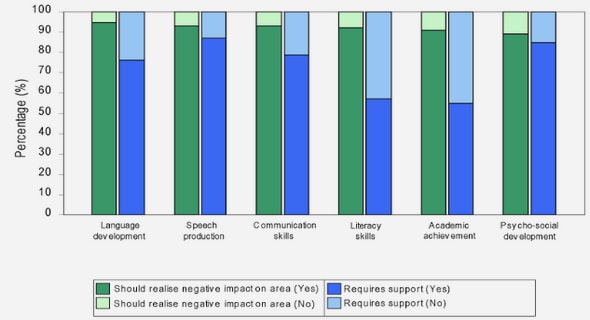(Downloads - 0)
For more info about our services contact : help@bestpfe.com
Table of contents
Introduction générale
Main introduction
1 The Vertical and Horizontal Distributive Effects of Energy Taxes : A Case Study of a French Policy
1.1 Introduction
1.2 Data
1.2.1 The French household surveys
1.2.2 Data to simulate the policy
1.3 Estimating households’ responses to prices
1.3.1 The Quadratic almost ideal demand system
1.3.2 Results
1.4 Environmental and distributive effects of energy taxes
1.4.1 The effects on greenhouse gas emissions
1.4.2 Monetary effects between income groups
1.5 Horizontal distributive effects
1.5.1 Monetary effects within income groups
1.5.2 The determinants of within-income group distributive effects
1.5.3 Alternative revenue-recycling strategies
1.6 Conclusions
1.A Descriptive statistics
1.B The microsimulation model TAXIPP
1.C The Quadratic Almost Ideal Demand System
1.C.1 The model
1.C.2 Elasticities
1.C.3 Households’ heterogeneity
1.C.4 Specification and estimation
1.C.5 Results
1.D Policies simulated
1.D.1 The official policy
1.D.2 Targeted transfers design
1.E Matching
1.E.1 Why it is necessary to match BdF and ENTD
1.E.2 The matching procedure
1.E.3 Ex post validation
2 Yellow Vests, Pessimistic Beliefs, and Carbon Tax Aversion
2.1 Introduction
2.2 Context, survey, and data
2.2.1 Context of the study
2.2.2 Our survey
2.2.3 Official households surveys
2.3 Pessimistic beliefs
2.3.1 Self-interest
2.3.2 Environmental effectiveness
2.3.3 Progressivity
2.4 How attitudes shape beliefs
2.4.1 Self-interest
2.4.2 Environmental effectiveness
2.4.3 Progressivity
2.5 How beliefs determine attitudes
2.5.1 Self-interest
2.5.2 Environmental effectiveness
2.5.3 Progressivity
2.6 Conclusion
2.A Raw data
2.B Notations
2.C The use of official household survey data
2.C.1 Official households surveys from Insee
2.C.2 Formulas to compute monetary effects of carbon tax policy
2.C.3 Predicting gains and losses
2.C.4 Distributive effects
2.D Beliefs and persistence
2.D.1 Elasticities
2.D.2 Self-interest
2.D.3 Environmental effectiveness
2.D.4 Progressivity
2.E Estimation of acceptation motives
2.E.1 Two-stage least squares : first stage results
2.E.2 Additional specifications
2.F Control variables
2.G Questionnaire
2.H Profile of the Yellow Vests
2.I Support rates for Tax & Dividend policies
2.J Relation between support and belief in progressivity
2.K Willingness to pay
2.L Ensuring data quality
3 French Attitudes on Climate Change, Carbon Taxation, and other Climate Policies
3.1 Introduction
3.2 The survey
3.2.1 Presentation of the survey
3.2.2 Eliciting attitudes
3.3 Perceptions and Attitudes over Climate Change
3.3.1 Knowledge
3.3.2 Positions
3.3.3 The Reaction Needed
3.4 Attitudes over Carbon Tax and Dividend
3.4.1 Widespread rejection
3.4.2 Perceived winners and losers
3.4.3 Perceived pros and cons
3.4.4 Consumption and mobility constraints
3.5 Attitudes over Other Policies
3.5.1 Preferred Revenue Recycling
3.5.2 Other Instruments
3.6 Determinants of Attitudes
3.6.1 Attitudes over climate change
3.6.2 Attitudes over policies
3.7 Conclusion
3.A Raw data
3.B Sources on GHG emissions
3.B.1 Carbon footprints
3.B.2 Current and target emissions
3.C Details on main regressions
3.C.1 Control variables
3.C.2 Measures for relative preferences
3.D Questionnaire
3.E Who are the Yellow Vests
3.F Supplementary material
3.F.1 Additional results on attitudes over climate change
3.F.2 Test different wording for winners and losers
3.F.3 Additional specifications for determinants of attitudes
3.F.4 Construction of the knowledge index
3.F.5 Logit regressions for determinants
3.F.6 Robustness for the absence of cultural cognition effect
4 Disaster Risks, Disaster Strikes, and Economic Growth : The Role of Preferences
4.1 Introduction
4.2 General framework
4.3 Benchmark : exogenous disasters
4.3.1 Specification
4.3.2 Optimal resources allocation
4.3.3 Optimal growth and the effects of disasters
4.4 Disasters of endogenous probability
4.4.1 Specification
4.4.2 Optimal resource allocation
4.4.3 Optimal growth and the effects of disasters
4.4.4 Disasters and welfare
4.5 Quantitative assessment
4.5.1 Set-up
4.5.2 How likely is it that disasters foster economic growth?
4.5.3 How much do disasters impact welfare ?
4.5.4 Does using Epstein-Zin-Weil preferences matters quantitatively?
4.6 Conclusion

